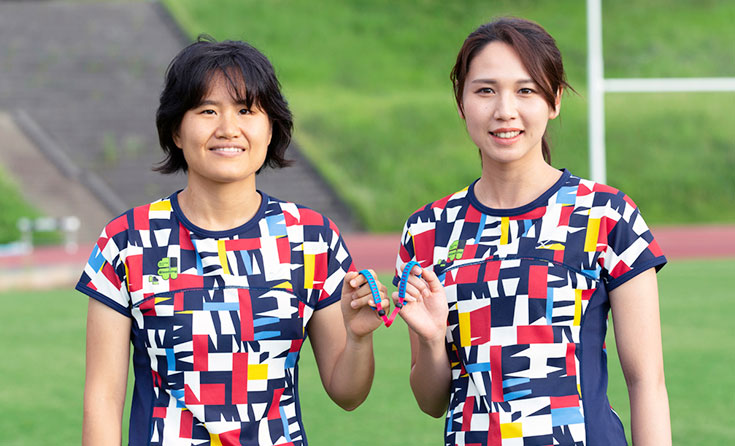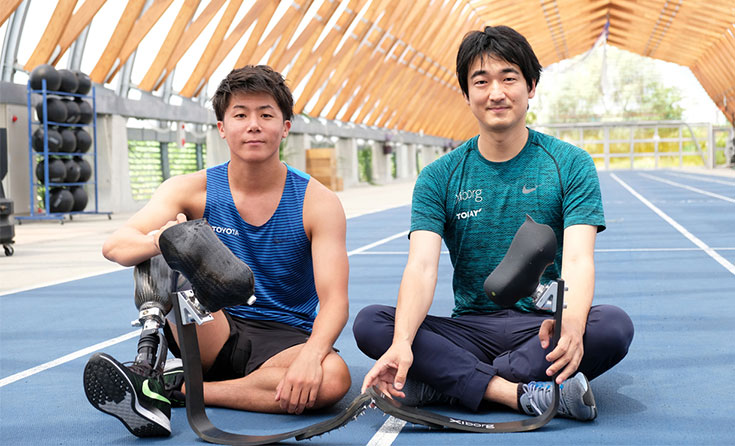niponica is a web magazine that introduces modern Japan to people all over the world.
2019 NO.27
The Olympics Are Coming to Tokyo

Together for the Paralympics
The Paralympics rely on multifaceted support provided by a large number of parties. This article introduces some of the parties that stand by athletes to support them, such as a guide who will run together with a visually challenged athlete in the Paralympic marathon, and a company that further enhances the abilities of athletes by developing implements and aids.
Photos: Obara Takahiro
Two athletes competing as one
Contestant: Inouchi Natsumi
Guide: Hino Minako

Inouchi Natsumi (left) and her guide Hino Minako holding the guiding rope
“Our job is not simply to run together with the contestant,” explains guide Hino Minako. An important part of the guide’s duty is to help the athlete in various aspects outside the actual competition, such as transportation and changing of clothes, etc. Often, the guides train together with the athletes, and sometimes even advise them in the manner of coaches. “Our job is to create an environment that makes it easier for the athlete to run. When giving advice, I make sure to use words that put the athlete in a positive state of mind.”
Hino Minako’s current partner is Inouchi Natsumi, the Japanese 1,500m and 5,000m record-holder.* She has trust in her guide, and is convinced that running with Ms. Hino will help her improve her records. They train together every day with the motto, “Never use a disability as an excuse not to do your best.”
* T11 class, as of June 2019
Pursuing the potential of sports prostheses
Athlete: Sato Keita
Engineer: Endo Ken

Sato Keita (left) and Endo Ken at Shin-toyosu Brillia Running Stadium, the location of the headquarters of Xiborg Inc., the company behind the development of the running-specific prostheses
For many years, Endo Ken has been engaged in development of prostheses for walking that take advantage of robotic technologies. He decided to create sports prostheses because he thought if runners with prostheses could break the records of intact athletes, it would inspire and encourage people with disabilities.
The first athlete who volunteered to participate in this challenge was Sato Keita. He was the only short-distance runner who competed in the Rio 2016 Paralympic Games using a Japanese prosthesis. He says that the perfect prosthesis for him is one that would bounce as if receiving energy from the ground. According to Mr. Endo, “It would be best if the rebound from kicking the ground would come above the center of gravity, but it is difficult to adjust the prostheses to match the sense of each athlete.” Despite these difficulties, he persisted with the development in close cooperation with the athletes. At the upcoming Tokyo 2020 Paralympic Games, they will capitalize on the strengths of their collaboration to face the challenges.





